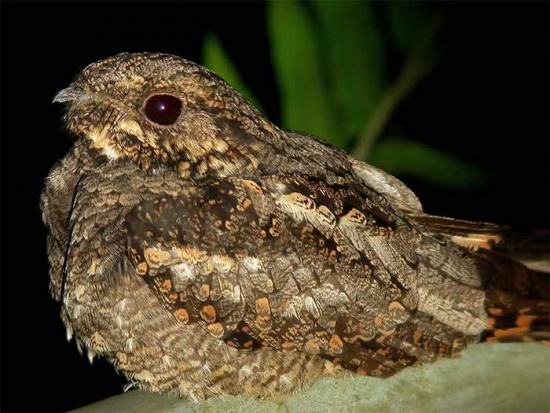(adding information) |
m (→Behaviour: spelling) |
||
| Line 11: | Line 11: | ||
Nocturnal. Roosts in trees (quite high) and on boulders. Sings from perch or ground.<br/> | Nocturnal. Roosts in trees (quite high) and on boulders. Sings from perch or ground.<br/> | ||
Breeding time different throughout range. From February to August in South India, May to August in Japan. Lays 1 - 2 eggs on bare ground, usually rocks, covered by vegetation. No nest.<br/> | Breeding time different throughout range. From February to August in South India, May to August in Japan. Lays 1 - 2 eggs on bare ground, usually rocks, covered by vegetation. No nest.<br/> | ||
| − | Movements of this species are poorly understood. The northern ''jokata'' is | + | Movements of this species are poorly understood. The northern ''jokata'' is highly migratory. Southern races maybe sedentary with some altitudinal movements. |
| + | |||
==External Links== | ==External Links== | ||
{{GSearch|Caprimulgus+indicus}} | {{GSearch|Caprimulgus+indicus}} | ||
Revision as of 17:40, 24 March 2008
- Caprimulgus indicus
Identification
Distribution
From southeast Siberia, Korea, Japan, east and south China to Burma, Bangladesh, Nepal to Pakistan and south to India and Sri Lanka. Northeastern birds winter in Indochina, the Philippines, Malaysia and Indonesia. Fairly common.
Taxonomy
Five subspecies recognized. Rasmussen (Birds of South Asia - The Ripley Guide) proposes a split into Indian Jungle Nightjar Caprimulgus indicus and Grey Nightjar Caprimulgus jotaka. The first would occour in South India, the latter in the rest of the range.
Habitat
Forests (different types), open woodland, scrubland, farmland, plantations. In the Himalayas in sparsely vegetated ravines, in Sri Lanka in stony fields. In winter also recorded in big cities.
Behaviour
Nocturnal. Roosts in trees (quite high) and on boulders. Sings from perch or ground.
Breeding time different throughout range. From February to August in South India, May to August in Japan. Lays 1 - 2 eggs on bare ground, usually rocks, covered by vegetation. No nest.
Movements of this species are poorly understood. The northern jokata is highly migratory. Southern races maybe sedentary with some altitudinal movements.
External Links
MP3 recording of Caprimulgus indicus at http://movie.geocities.jp/qusoappa/infotori4/index.html




